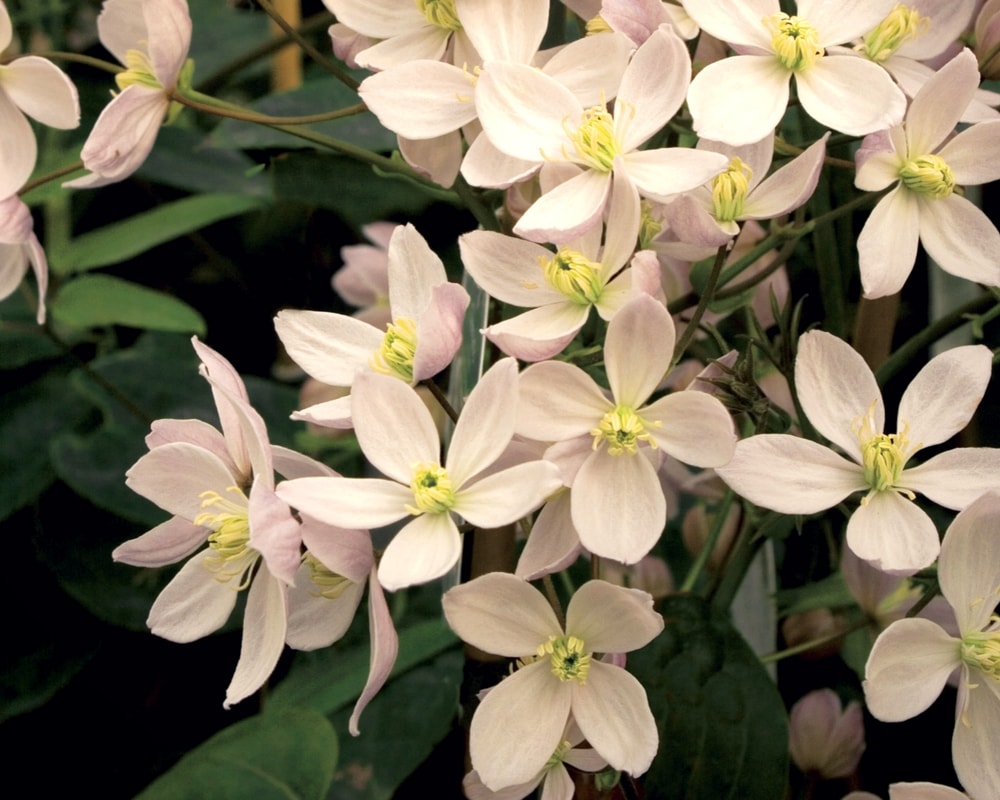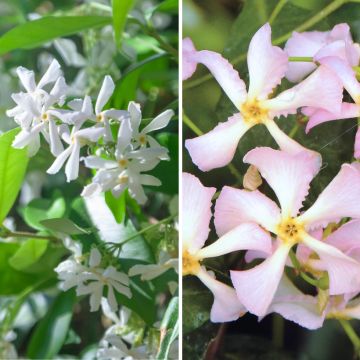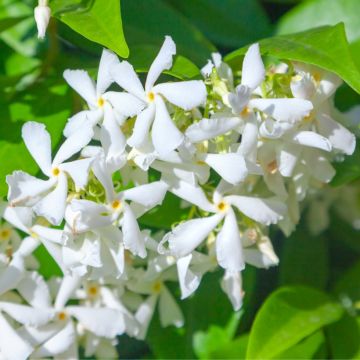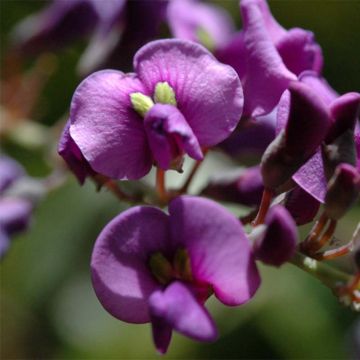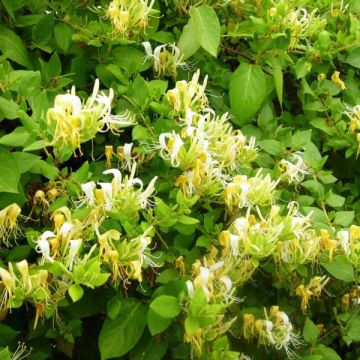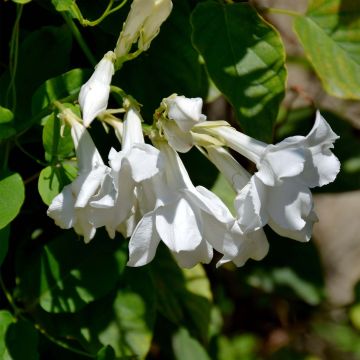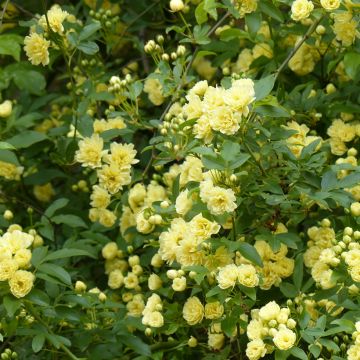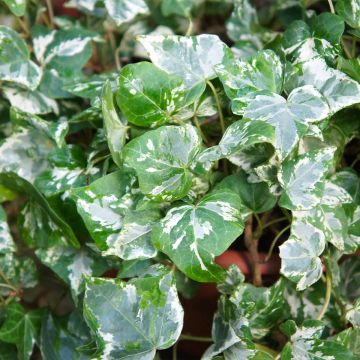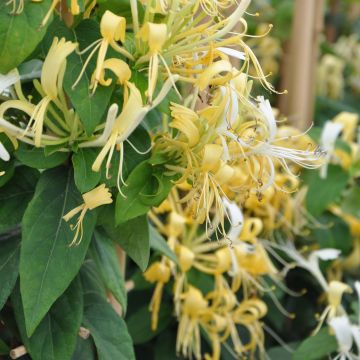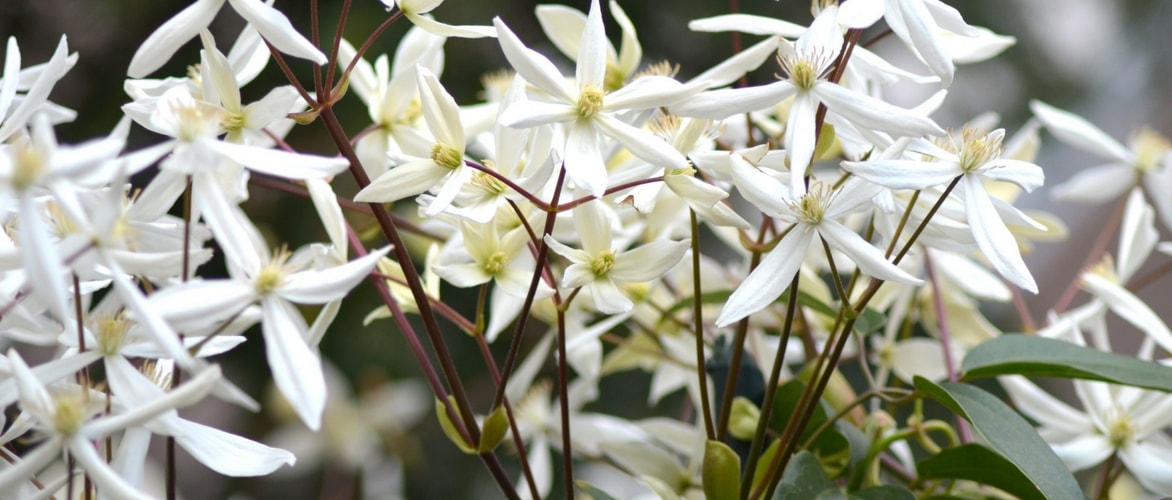
Evergreen clematis: how to choose, plant and grow?
Our tips to grow Armandii and Balearica clematis
Contents
Clematis are climbing plants that are often deciduous, but there are also a few evergreen varieties! They can be grown in the ground or in pots, and generally bloom in late winter or early spring. Most of them are quite hardy and require winter protection. Discover where, when, and how to plant Armandii and Cirrhosa clematis: all our tips for successfully growing and maintaining them.
Which evergreen clematis variety to choose?
Clematis armandii offer a lovely white or pink flowering in late winter, which stands out against their dark green, glossy foliage. They thrive against a south-facing wall and do not tolerate exposure to cold winds. For a slightly more colourful flowering, choose the clematis cirrhosa, particularly the varieties ‘Advent Bells’ or ‘Freckles’, which bloom in mid-winter, sometimes as early as December. They are very little hardy and will need to be planted in pots and brought indoors for winter if you live in northern France. Also discover the clematis ‘Winter Beauty’, which will charm you with its lovely bell-shaped white flowers. However, it is quite delicate to cultivate!
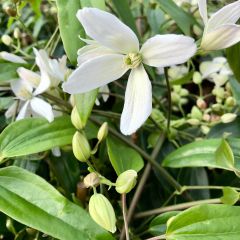
Clematis armandii - Evergreen Clematis
- Flowering time April, May
- Height at maturity 4 m
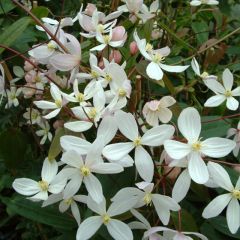
Clematis armandii Apple Blossom
- Flowering time April, May
- Height at maturity 4 m

Clematis x cartmanii Early Sensation
- Flowering time April, May
- Height at maturity 3 m
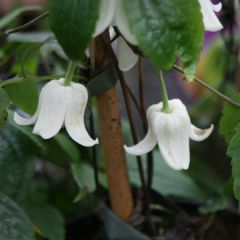
Clematis urophylla Winter Beauty
- Height at maturity 3 m
The clematis cirrhosa
Clematis cirrhosa are native to the Mediterranean region and are not very hardy. They can reach up to three metres in height and adapt well to pot cultivation, allowing them to be brought indoors for winter.
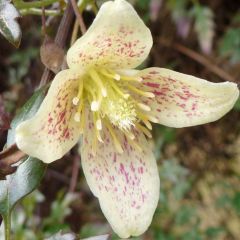
Clematis cirrhosa var. balearica
- Height at maturity 3 m

Clematis x cirrhosa Advent Bells
- Height at maturity 4 m
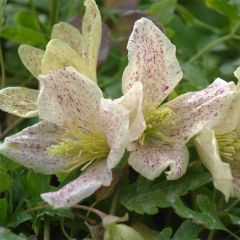
Clematis cirrhosa Winter Parasol
- Height at maturity 2,50 m
Discover other Evergreen climbers
View all →Available in 0 sizes
Available in 3 sizes
Available in 1 sizes
Available in 2 sizes
Available in 1 sizes
Available in 1 sizes
Available in 3 sizes
Available in 2 sizes
Available in 1 sizes
Available in 2 sizes
Where to plant evergreen clematis?
Plant your clematis preferably in full sun, but with the base in shade.
Evergreen clematis need a sheltered location from the wind to thrive. Avoid placing them in an area exposed to winter winds. North of the Loire, a well-protected situation is almost essential for them to withstand severe cold. Plant them against a trellis at the foot of a south or south-west facing wall. Armandii clematis will tolerate being planted in open ground in northern France, unlike cirrhosa clematis.
We advise against planting them in regions with a mountain or continental climate, as they will struggle to survive the winter, even when protected… Unless, of course, you cultivate them in pots and bring them indoors for the winter.
Clematis are delicate and demanding plants. They appreciate deep, rich, humus-bearing soils. If your soil is poor, you will need to add compost to enrich it. The soil must also remain moist, but be sufficiently draining. They do not like excess moisture in winter. To facilitate water drainage, you can add gravel, garden sand, or pumice to your soil.
Install cirrhosa clematis in full sun and well-draining soil, as they do not tolerate wet soils in winter. They will thrive against a wall facing full south. Less hardy than other varieties, they will need protection, either by planting them in pots and bringing them under cover for the winter, or by planting them against a south-facing wall and applying a thick mulch at the base… Unless you live in the Mediterranean region!
How to plant them properly?
- Soak the root ball in a basin filled with water to rehydrate it.
- Using a spade or a shovel, dig a planting hole two to three times the size of the root ball. You can add a layer of gravel, sand for gardens, or pumice to ensure good drainage. Then, place some potting soil in the planting hole, mixed with a bit of compost.
- Without untangling the roots, lay the root ball in the hole, which encourages the development of lateral buds.
- Fill in by adding potting soil around the plant and gently firm it down, then water.
- We suggest installing a mulch at the base of the clematis to keep the soil cool.
- Continue to water regularly in the year of planting.
- You can also plant your clematis in a pot. In this case, it will require more frequent watering and regular repotting.
How to care for them?
- Water in case of prolonged drought, especially during the first few years.
- In spring and autumn, add organic matter, in the form of compost or well-decomposed manure.
- You can prune very lightly your clematis in spring, once the flowering is finished, using a pruning shear that is well cleaned. Remove damaged or poorly positioned branches and shorten the longest stems. These evergreen varieties can also do without pruning.
- Evergreen clematis are quite not hardy. Below -5 °C, protect the plant with a winter cover, especially during the first few years. After three years, it will be strong enough to do without protection. If you have planted it in a pot, you can bring it inside a conservatory for the winter.
- Subscribe!
- Contents































